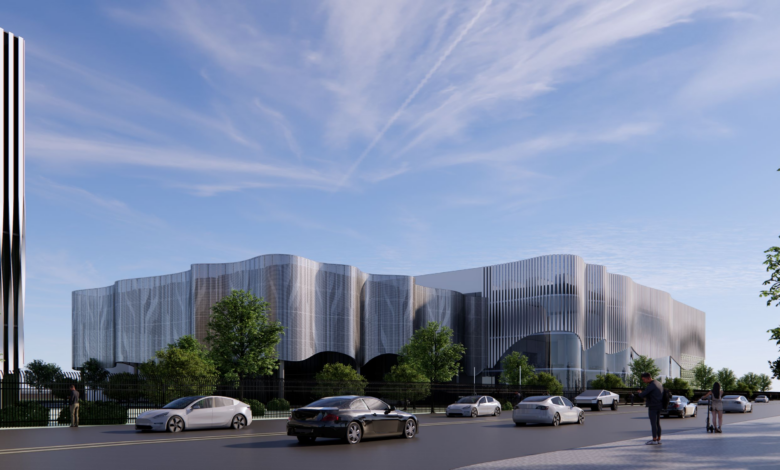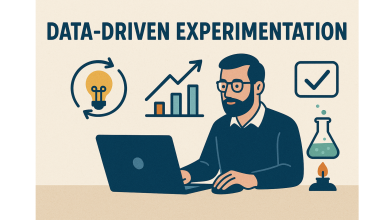
Reports estimate that the global data center market will reach $452.53 billion in 2025, growing to $624.07 billion by 2029. Data centers are essential to powering the digital economy, supporting everything from cloud computing to AI-driven applications. However, traditional data centers consume vast amounts of electricity and water, often straining local resources without contributing to their communities.
As demand for digital infrastructure soars, the conversation around making these facilities more sustainable has become critical. A new wave of data center design will seek to expand the power grid, providing a net benefit to their surroundings through energy efficiency, beautiful architecture, and thoughtful and intentional community collaboration.
Powering the Future: Decentralized Energy Solutions
One of the most pressing challenges data centers face is their high energy consumption. These facilities require significant amounts of electricity to power servers and cooling systems. This demand often places considerable strain on local energy grids, contributing to higher energy prices and environmental degradation.
A promising solution is the integration of decentralized energy systems within data centers. Data centers can reduce reliance on the traditional power grid by harnessing on-site renewable energy sources such as solar panels, wind turbines, and fuel cells.
For example, the Terra Ventures data center in San Jose, California, will utilize Bloom fuel cells powered by natural gas. These fuel cells will lower CO2 emissions by an estimated 30% compared to traditional power generation methods. The data center also features a self-sufficient microgrid, operating independently from the local utility, which helps alleviate pressure on the regional energy infrastructure.
Additionally, incorporating a one-way, reversed power grid connection enables redundant power to be fed back into the grid when not in use, providing clean energy to the surrounding area. This innovation reduces the environmental impact and creates an additional revenue stream for the data center while contributing needed power to the local grid.
Beyond Function: Designing Data Centers That Enhance Communities
Viewed as big gray boxes, data centers are historically unattractive industrial structures that contribute little to the aesthetic value of their surroundings. Their towering, windowless facades and vast cooling units often create an imposing and uninviting atmosphere. However, innovative design approaches are challenging this norm.
Modern data center architects increasingly focus on blending functionality with visual appeal. The Terra Ventures data center is a prime example of this shift. The project’s perforated metal panels create a captivating and innovative facade that can create visual effects like recreating photographs or patterns. The use of twisted aluminum fins on the facade to produce wave patterns also adds to the aesthetic interest.
The Terra Ventures project will also incorporate green spaces, a greenhouse, and a community retail center. This combination enhances the environmental sustainability and the overall visual appeal of the area, transforming a typically gray and uninviting building into a community asset.
A New Kind of Sustainability: Heat Reuse & Greenhouse Agriculture
Excess heat is a natural by-product of this data center’s operation, with Bloom fuel cells generating substantial thermal energy. Traditionally, this heat is considered waste and is released into the atmosphere, contributing to increased emissions. However, innovative approaches to heat reuse are redefining the role of data centers in sustainable infrastructure.
Absorption chillers, which use waste heat to generate chilled water for cooling the data center, are one such innovation. Data centers can reduce their cooling demands and carbon emissions by capturing and reusing this thermal energy. Beyond this, some forward-thinking facilities use waste heat to support controlled-environment agriculture. The Terra Ventures project plans to leverage the waste heat from its fuel cells for absorption chillers, which will supplement the facility’s cooling requirements by up to 70%.
The excess heat will later serve on-site greenhouses, which can utilize CO2 emissions from the fuel cells as a natural fertilizer, creating a symbiotic relationship between the data center and agriculture. This innovation reduces the data center’s environmental impact and provides a local source of fresh produce, promoting food security and reducing the carbon footprint of food transportation.
At a large scale, these greenhouse operations can create new job opportunities, from construction to agriculture management, fostering local economic growth while enhancing sustainability. This model can become a significant economic anchor in rural areas, providing jobs and boosting local economies.
Economic and Community Benefits
Data centers are increasingly eligible for tax incentives as municipalities respond to the rising demand for sustainable development. With a global push for greener infrastructure, local governments offer regulatory benefits to encourage the adoption of energy-efficient and environmentally responsible data center models.
Beyond sustainability, data centers can serve as economic catalysts, particularly in rural areas. Integrating self-sustaining energy production and agricultural initiatives provides new opportunities for regions traditionally reliant on farming or manufacturing. Additionally, by hiring local workers, data centers contribute to job creation and community revitalization.
At the Terra Ventures data center, the planned greenhouse will feature community rooms and educational facilities, fostering deeper local engagement and reinforcing the connection between technology and sustainable growth.
Industry Adoption and Future Challenges
While the vision of sustainable, community-focused data centers is promising, several barriers hinder widespread adoption. The high upfront costs of integrating renewable energy systems, greenhouse agriculture, and other sustainable technologies can deter companies from pursuing these models. Additionally, regulatory frameworks are often slow to adapt to emerging innovations, and technical limitations can make large-scale renewable energy implementation challenging.
Supply chain disruptions also pose a significant challenge. The availability of critical components—such as energy-efficient cooling systems, renewable energy infrastructure, and advanced battery storage—can be inconsistent, delaying projects and increasing costs. Fluctuations in material sourcing, geopolitical factors, and transportation constraints further complicate the transition to more sustainable data center models.
However, rapid technological advancements are helping to address these challenges. AI and automation enable data centers to optimize energy consumption, monitor cooling systems, and enhance resource efficiency, reducing operational costs while improving sustainability. AI-driven supply chain management can also help predict disruptions, streamline logistics, and ensure a more resilient infrastructure.
As seen in the Terra Ventures data center, one promising advancement is the shift from AC (alternating current) to DC (direct current) power. Since servers naturally operate on DC power, converting electricity directly from fuel cells at 400 volts DC eliminates inefficiencies caused by transformation losses. This approach removes the need for transformers, allows direct power transfer to power distribution units (PDUs), and leverages supercapacitors to smooth out load spikes—an especially critical benefit for AI-driven data centers with fluctuating computational demands.
A DC power system can significantly extend equipment lifespans by mitigating load variations. For example, unmitigated AI-driven load spikes can increase the schedule for replacing a fuel cell’s stack from five years to two, more than halving its lifecycle. These innovations enhance energy efficiency and contribute to long-term sustainability, making the future of data centers resilient and environmentally responsible.
Shaping the Future of Sustainable Data Centers
As the demand for digital infrastructure grows, the industry must embrace a new data center design model that balances the digital economy’s needs with the benefits of sustainable, community-focused infrastructure. Data centers can transform from burdens on local communities into valuable assets by adopting decentralized energy solutions, integrating agriculture, and utilizing waste heat. For the industry to move forward, it will require a collective commitment to sustainability, innovation, and thoughtful design.




